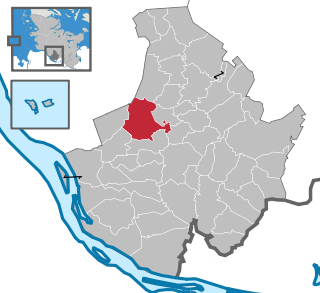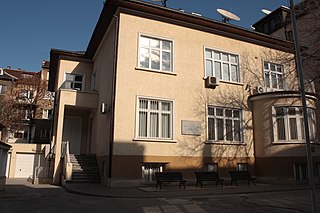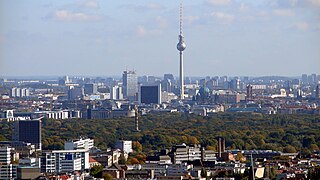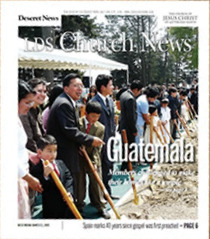This article is being considered for deletion in accordance with Wikipedia's deletion policy. Please share your thoughts on the matter at this article's entry on the Articles for deletion page. Feel free to improve the article, but the article must not be blanked, and this notice must not be removed, until the discussion is closed. For more information, particularly on merging or moving the article during the discussion, read the guide to deletion. |
This article relies too much on references to primary sources .(October 2018) (Learn how and when to remove this template message) |
| Erich W. Kopischke | |
|---|---|
| First Quorum of the Seventy | |
| 31 March 2007 | |
| Called by | Gordon B. Hinckley |
| Personal details | |
| Born | Erich Willi Kopischke 20 October 1956 Elmshorn, West Germany |
Erich Willi Kopischke (born 20 October 1956) has been a general authority of The Church of Jesus Christ of Latter-day Saints (LDS Church) since 2007.
In The Church of Jesus Christ of Latter-day Saints, a general authority is a member of the highest levels of leadership in the church who has administrative and ecclesiastical authority over the church. A general authority's jurisdiction is church-wide, in contrast to the responsibilities of a local authority or an area authority, which relate to a particular area, unit, or department of the church. As a group, the general authorities are often referred to as "the Brethren". As of October 2017, there are 109 general authorities.

The Church of Jesus Christ of Latter-day Saints, often informally known as the LDS Church or Mormon Church, is a nontrinitarian, Christian restorationist church that is considered by its members to be the restoration of the original church founded by Jesus Christ. The church is headquartered in Salt Lake City, Utah in the United States, and has established congregations and built temples worldwide. According to the church, it has over 16 million members and 67,000 full-time volunteer missionaries. In 2012, the National Council of Churches ranked the church as the fourth-largest Christian denomination in the United States, with over 6.5 million members reported by the church, as of January 2018. It is the largest denomination in the Latter Day Saint movement founded by Joseph Smith during the period of religious revival known as the Second Great Awakening.
Kopischke was born in Elmshorn, West Germany. His parents, Kurt Kopischke and Helga Haupt, joined the LDS Church during World War II. Shortly before Kopischke's birth, his parents fled East Germany.

Elmshorn is a town in the district of Pinneberg in Schleswig-Holstein in Germany. It is 30 km north of Hamburg on the small river Krückau, a tributary of the Elbe, and with 49,000 inhabitants is the sixth-largest town in the state of Schleswig-Holstein, Germany. It is the birthplace of writer and editor Hermann Schlüter (1851–1919), the mathematician Hermann Weyl (1885–1955) and the medievalist Heinz Woehlk.

West Germany, officially the Federal Republic of Germany, and referred to by historians as the Bonn Republic, was a country in Central Europe that existed from 1949 to 1990, when the western portion of Germany was part of the Western bloc during the Cold War. It was created during the Allied occupation of Germany in 1949 after World War II, established from eleven states formed in the three Allied zones of occupation held by the United States, the United Kingdom and France. Its capital was the city of Bonn.

World War II, also known as the Second World War, was a global war that lasted from 1939 to 1945. The vast majority of the world's countries—including all the great powers—eventually formed two opposing military alliances: the Allies and the Axis. A state of total war emerged, directly involving more than 100 million people from over 30 countries. The major participants threw their entire economic, industrial, and scientific capabilities behind the war effort, blurring the distinction between civilian and military resources. World War II was the deadliest conflict in human history, marked by 50 to 85 million fatalities, most of whom were civilians in the Soviet Union and China. It included massacres, the genocide of the Holocaust, strategic bombing, premeditated death from starvation and disease, and the only use of nuclear weapons in war.
From 1975 to 1977, Kopischke served as an LDS Church missionary in the Germany Munich Mission. In December 1978, Kopischke was sealed to Christiane Glück in the Swiss Temple and they are the parents of seven children.

Missionaries of The Church of Jesus Christ of Latter-day Saints —widely known as Mormon missionaries—are volunteer representatives of the LDS Church who engage variously in proselytizing, church service, humanitarian aid, and community service. Mormon missionaries may serve on a full- or part-time basis, depending on the assignment, and are organized geographically into missions. The mission assignment could be to any one of the 421 missions organized worldwide.

Munich is the capital and most populous city of Bavaria, the second most populous German federal state. With a population of around 1.5 million, it is the third-largest city in Germany, after Berlin and Hamburg, as well as the 12th-largest city in the European Union. The city's metropolitan region is home to 6 million people. Straddling the banks of the River Isar north of the Bavarian Alps, it is the seat of the Bavarian administrative region of Upper Bavaria, while being the most densely populated municipality in Germany. Munich is the second-largest city in the Bavarian dialect area, after the Austrian capital of Vienna.
A mission of The Church of Jesus Christ of Latter-day Saints is a geographical administrative area to which church missionaries are assigned. Almost all areas of the world are within the boundaries of an LDS Church mission, whether or not Mormon missionaries live or proselytize in the area. As of July 2018, there were 407 missions of the LDS Church. On January 2, 2019, the LDS Church announced changes that will close 12 missions through boundary realignments and open up 4 new ones, effective July 1, 2019. When these changes take place, there will be 399 missions of the church.
Kopischke has served in many callings in the LDS Church. He was president of Nuremberg Germany Stake from 1994 to 2003. During this time, the English-speaking stake, composed primarily of United States military personnel, and the German-speaking Nuremberg District were combined. Since Kopischke had learned English while working in the mission office on his mission, he was able manage matters of the stake in both languages used by its members.

Nuremberg is the second-largest city of the German federal state of Bavaria after its capital Munich, and its 511,628 (2016) inhabitants make it the 14th largest city in Germany. On the Pegnitz River and the Rhine–Main–Danube Canal, it lies in the Bavarian administrative region of Middle Franconia, and is the largest city and the unofficial capital of Franconia. Nuremberg forms a continuous conurbation with the neighbouring cities of Fürth, Erlangen and Schwabach with a total population of 787,976 (2016), while the larger Nuremberg Metropolitan Region has approximately 3.5 million inhabitants. The city lies about 170 kilometres (110 mi) north of Munich. It is the largest city in the East Franconian dialect area.

English is a West Germanic language that was first spoken in early medieval England and eventually became a global lingua franca. It is named after the Angles, one of the Germanic tribes that migrated to the area of Great Britain that later took their name, as England. Both names derive from Anglia, a peninsula in the Baltic Sea. The language is closely related to Frisian and Low Saxon, and its vocabulary has been significantly influenced by other Germanic languages, particularly Norse, and to a greater extent by Latin and French.

German is a West Germanic language that is mainly spoken in Central Europe. It is the most widely spoken and official or co-official language in Germany, Austria, Switzerland, South Tyrol (Italy), the German-speaking Community of Belgium, and Liechtenstein. It is also one of the three official languages of Luxembourg and a co-official language in the Opole Voivodeship in Poland. The languages which are most similar to German are the other members of the West Germanic language branch: Afrikaans, Dutch, English, the Frisian languages, Low German/Low Saxon, Luxembourgish, and Yiddish. There are also strong similarities in vocabulary with Danish, Norwegian and Swedish, although those belong to the North Germanic group. German is the second most widely spoken Germanic language, after English.
Kopischke spent most of the 1980s and early 1990s working in the insurance industry. In 1996, he became the Church Educational System area director in the church's Europe Central Area. From 2003 to 2006, he served as president of the Germany Berlin Mission. After returning from this assignment, he became an area seventy and served as second counselor in the presidency of the church's Europe Central Area. He was called as a general authority and member of the First Quorum of the Seventy in 2007. He then served first as a counselor, then from 2009 to 2012 as president of the church's Europe Area.

The Church Educational System (CES) of The Church of Jesus Christ of Latter-day Saints consists of several institutions that provide religious and secular education for both Latter-day Saint and non–Latter-day Saint elementary, secondary, and post-secondary students and adult learners. Approximately 700,000 individuals were enrolled in CES programs in 143 countries in 2011. CES courses of study are separate and distinct from religious instruction provided through wards. Kim B. Clark, a member of the First Quorum of Seventy, has been the CES Commissioner since August 1, 2015.

Mission president is a priesthood leadership position in The Church of Jesus Christ of Latter-day Saints. A mission president presides over a mission and the missionaries serving in the mission. Depending on the particular mission, a mission president may also be the presiding priesthood leader of some or all Latter-day Saints within the geographic boundaries of the mission. Mission presidents are ordained high priests of the church.

Berlin is the capital and largest city of Germany by both area and population. Its 3,748,148 (2018) inhabitants make it the second most populous city proper of the European Union after London. The city is one of Germany's 16 federal states. It is surrounded by the state of Brandenburg, and contiguous with its capital, Potsdam. The two cities are at the center of the Berlin-Brandenburg capital region, which is, with about six million inhabitants and an area of more than 30,000 km², Germany's third-largest metropolitan region after the Rhine-Ruhr and Rhine-Main regions.

